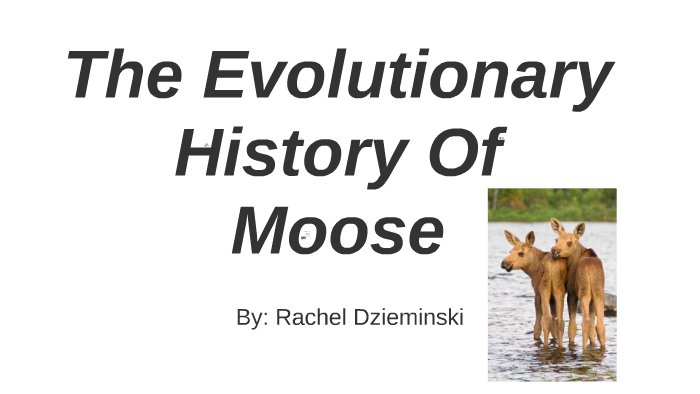
Moose have a rich evolutionary history that tells us a lot about how animals adapt and survive in changing environments. From their ancient ancestors to the majestic beings wandering the forests today, understanding their journey can give us insights into wildlife and their ecosystems. So, grab that cocoa and let’s dive into the world of the moose!
Where It All Began: The Ancestors of Moose
The story of the moose begins millions of years ago with their ancient ancestors. These early deer-like creatures roamed wide across North America and Eurasia. The most important ancestor in this tale is the *Cervalces*, a huge, prehistoric moose-like animal that lived around 2 million years ago. Imagine a creature that was nearly twice the size of today’s moose!
These ancient giants had long legs and large antlers, similar to modern moose, but they also adapted to different environments. Some scholars believe they were forest dwellers, while others think they thrived in more open areas, showing a remarkable ability to adapt to their surroundings. This adaptability is a theme that continues through the moose’s history.
The Evolution of Modern Moose
Fast forward to around 1 million years ago, when what we recognize as the modern moose began taking shape. These animals had features that helped them survive in colder climates. Their long legs allowed them to traverse snowy terrains, while their big bodies helped retain heat. This was crucial as they wandered through forests and across frozen landscapes in search of food.
Interestingly, they developed their distinctive large, palmate antlers, which help attract mates and show dominance. Here’s the thing: while many animals have antlers, moose are unique because their antlers can grow to be quite massive, sometimes spanning over six feet! This evolution showcases both beauty and practicality, serving as tools in the intricate dance of life that is mating season.
Moose Adaptations: Surviving the Climate
As the climate began to change, moose had to make some changes of their own. During the last Ice Age, they adapted to cooler temperatures and even migrated southward as glaciers advanced. This migration allowed them to inhabit new areas, from the dense forests of Canada to the tundras of Alaska.
Moose are particularly known for their incredible ability to forage. Their long necks and flexible lips allow them to browse on tall vegetation, like willow and birch, which is essential when food is scarce. This adaptability isn’t just about food; it also involves avoiding predators. With their size, moose can be intimidating, but they still rely on speed and quick thinking when threatened.
Today’s Moose: A Snapshot of Modern Living
Today, moose can be found across North America, Europe, and Asia, but their populations are changing. Habitat loss, climate change, and hunting have all impacted their numbers. Interestingly, some moose have adapted to urban environments, often wandering into cities in search of food. You might be surprised to see one strolling through a suburban neighborhood!
In the wild, moose face threats from wolves and bear. However, their size and strength give them an advantage. Despite being clumsy-looking, they can run up to 35 miles per hour! This speed is essential for escaping predators and navigating their sometimes tricky forest homes.
The Role of Moose in Ecosystems
Moose play a vital role in their ecosystems. By feeding on trees and shrubs, they help maintain plant diversity and balance in their habitats. Their browsing can create opportunities for other species of plants to grow, making them essential contributors to forest health.
Here’s the fun part—when moose munch on certain types of vegetation, they also support other wildlife. As they move through the forest, they create paths that smaller animals can use, and their waste, rich in nutrients, fertilizes the ground. It’s like they are nature’s gardeners, helping the environment flourish.
Conservation Efforts and Future of Moose
Despite their resilience, moose populations are declining in some areas due to various human impacts. Conservation efforts are essential to keep these magnificent creatures around. Organizations and wildlife biologists are working tirelessly to study moose behavior, monitor populations, and promote habitat preservation.
You might be wondering how you can help. Supporting local conservation efforts or being mindful about wildlife habitats can make a big difference. Even something as simple as spreading awareness about moose conservation can help protect these animals for future generations.
The evolutionary history of the moose is more than just a tale of survival; it’s a story of adaptation, resilience, and connection to the environment. From their ancient ancestors to the majestic animals we see today, moose embody the spirit of nature’s continuous journey.
As we continue learning about these incredible creatures, let’s appreciate their role in the ecosystem and the efforts to protect them. Just like that warm cup of cocoa shared over a story, understanding the moose allows us to connect more deeply with the wild around us. So next time you see a moose, you’ll know the remarkable journey that brought it to your doorstep!
